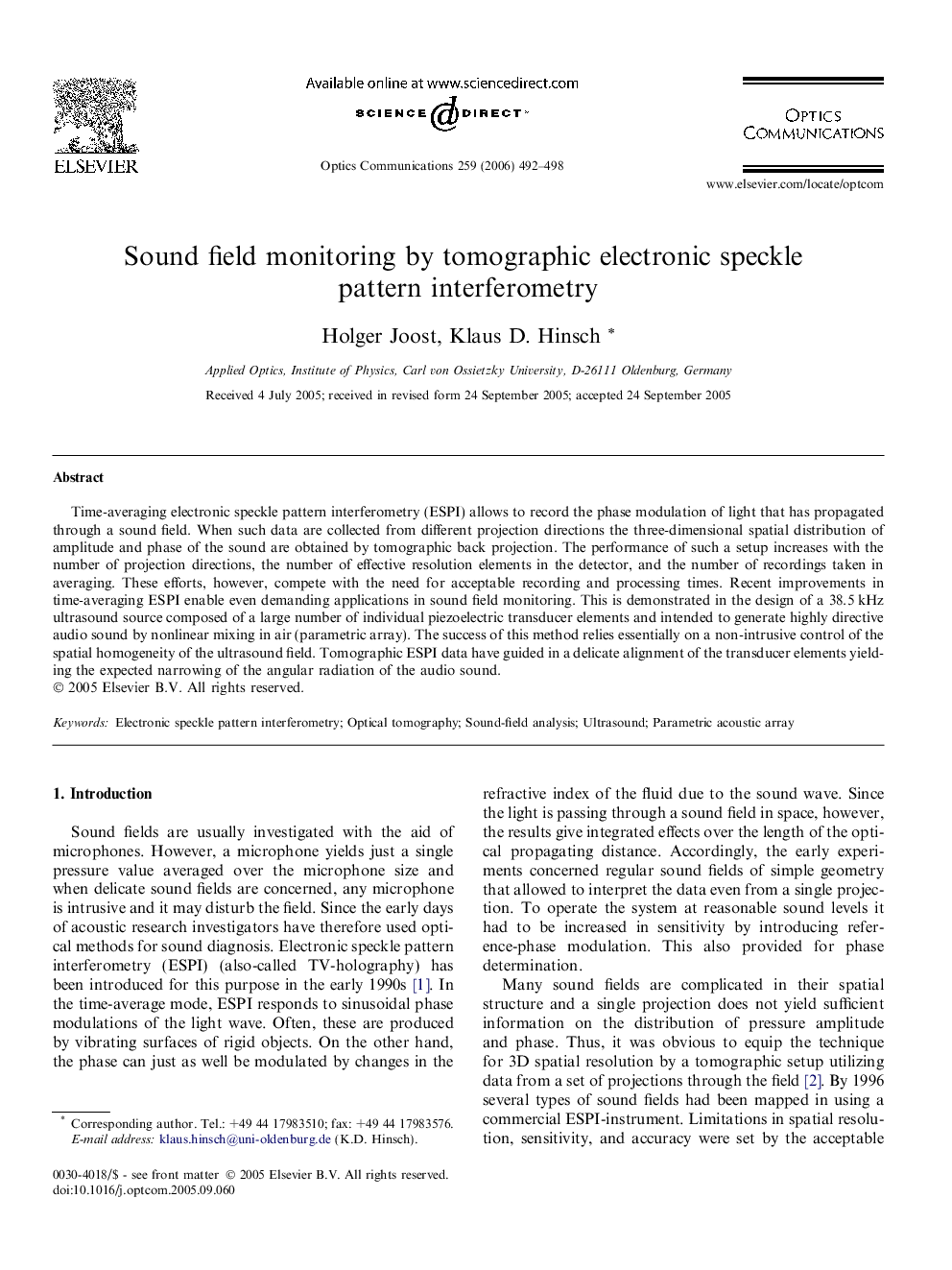| Article ID | Journal | Published Year | Pages | File Type |
|---|---|---|---|---|
| 1541726 | Optics Communications | 2006 | 7 Pages |
Abstract
Time-averaging electronic speckle pattern interferometry (ESPI) allows to record the phase modulation of light that has propagated through a sound field. When such data are collected from different projection directions the three-dimensional spatial distribution of amplitude and phase of the sound are obtained by tomographic back projection. The performance of such a setup increases with the number of projection directions, the number of effective resolution elements in the detector, and the number of recordings taken in averaging. These efforts, however, compete with the need for acceptable recording and processing times. Recent improvements in time-averaging ESPI enable even demanding applications in sound field monitoring. This is demonstrated in the design of a 38.5Â kHz ultrasound source composed of a large number of individual piezoelectric transducer elements and intended to generate highly directive audio sound by nonlinear mixing in air (parametric array). The success of this method relies essentially on a non-intrusive control of the spatial homogeneity of the ultrasound field. Tomographic ESPI data have guided in a delicate alignment of the transducer elements yielding the expected narrowing of the angular radiation of the audio sound.
Keywords
Related Topics
Physical Sciences and Engineering
Materials Science
Electronic, Optical and Magnetic Materials
Authors
Holger Joost, Klaus D. Hinsch,
